2024 Ford Ranger First Drive Review: A Capable Truck I Don’t Want to Drive
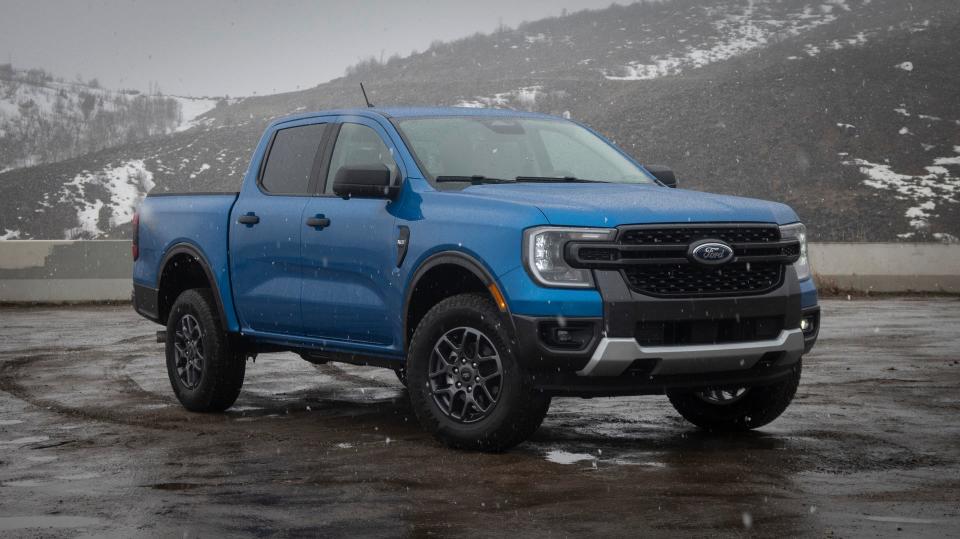
The 2024 Ford Ranger is a nice-looking truck with some solid capability claims. But you can only buy one with a short cargo bed and a four-door cab. There’s about a square acre of screens on the dash, but the interior feels about as refined as a booth at your high school pizza place. Suffice it to say, I have mixed feelings about this truck.
On paper, the new Ranger offers a lot of working power for its size. If you get the towing package with a hitch receiver, both the base 2.3-liter turbo-four and the soon-to-be-available 2.7-liter EcoBoost V6 are rated to pull 7,500 pounds. It’s rated to tow 3,500 pounds even if you just run one of those little bumper-mounted hitches. The bigger engine unlocks better passing power and hillclimbing comfort at the expense of a bit more fuel (20 mpg in combined driving with a 2.7-liter 4x4 versus 22 mpg combined if you grab the 2.3).
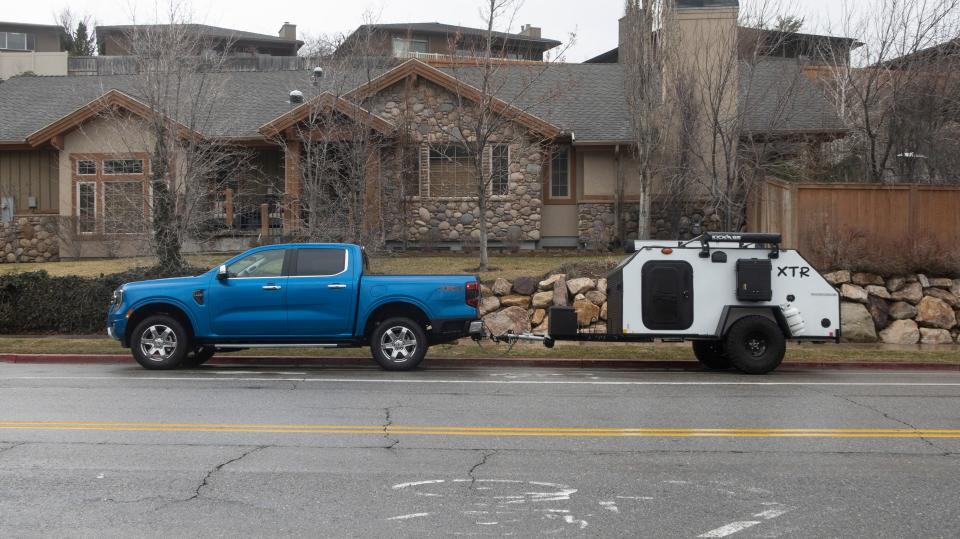
For context, the 2019 model-year Ranger that was released at the 2018 Detroit Auto Show (the first “back in America model”) also had a 7,500-pound towing max and a 270-hp 2.3-liter EcoBoost engine. What is significantly new for our market now is the look, the large portrait infotainment screen, and the availability of the bigger engine that’s coming later this year. It’s also more expensive now—a 2019 SuperCrew (four-door) short bed 4x4 Lariat listed at $39,480 when it was new, while the base MSRP of a comparable model is $47,115 for 2024.
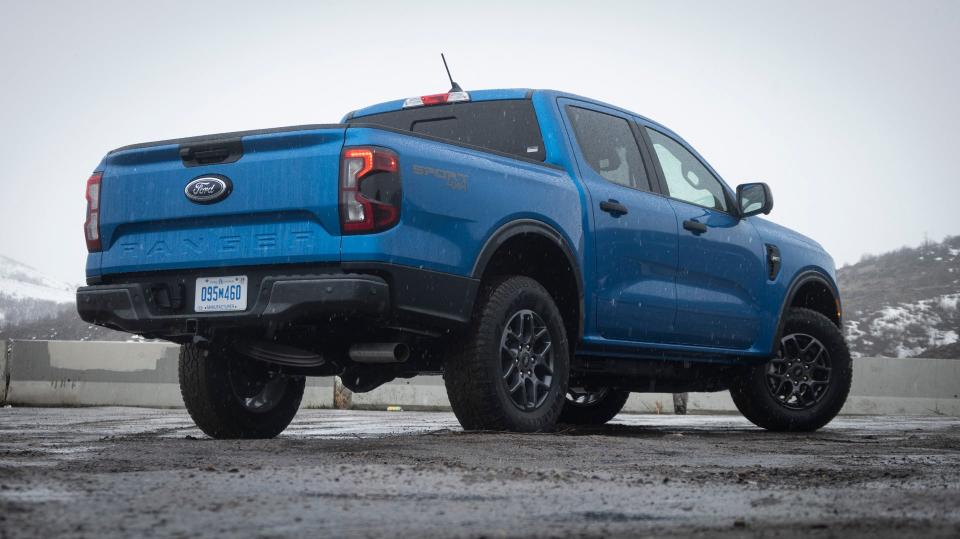
Hang on though, we need another piece of context now too: $39,480, in January 2018, had the buying power of about $49,428 in today's money according to the Bureau of Labor Statistics' inflation calculator. In other words, it is fair to say that a new Ranger is a better value than the last one was out of the gate.
What we’re getting as the new-for-2024 Ranger has been for sale for a couple of years abroad. Today’s Ranger is more of an Australian vehicle than an American one; it’s mostly designed and engineered Down Under. That’s not bad—Aussies love trucks and have some of the best off-road proving grounds on planet Earth.
At the Ranger’s launch event in Utah, Ford’s people were adamant that it’s “new, new, new,” but I don’t know, man. The T6 platform (born circa 2010) is still the foundation and from the side, the truck looks like the global Rangers I was encountering in Australia and South America over a decade ago.
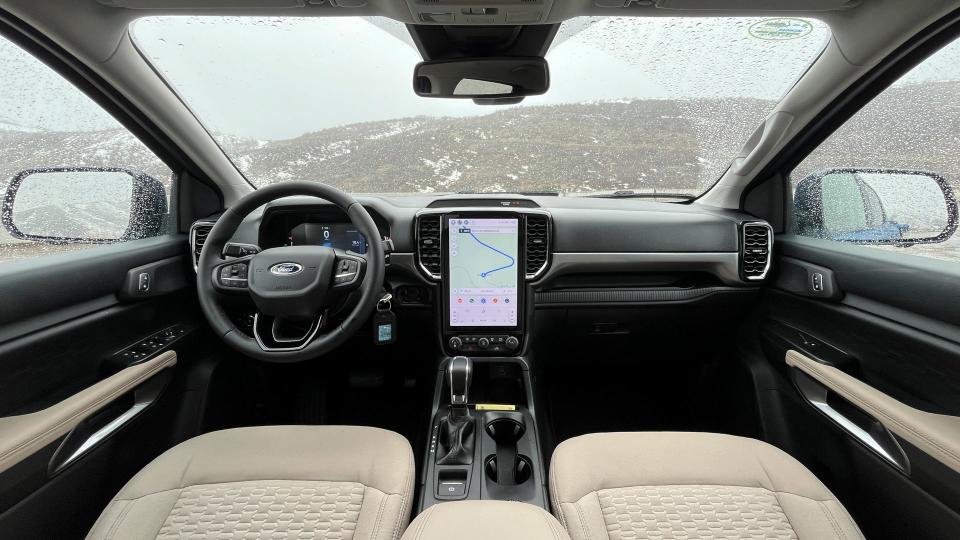
That said, I don’t think “newness” really matters that much when we’re talking work trucks—they all boil down to a square frame, a pair of leaf springs, and an engine sending power to the rear or all four wheels. Once the segment evolved to independent front suspension (in, like, the ’80s) and disc brakes (which Toyota just caught up to), we kind of finished with game-changing innovations on pickups. High-performance variants like the Raptor, however, are a different story which we’ll get into in another post.

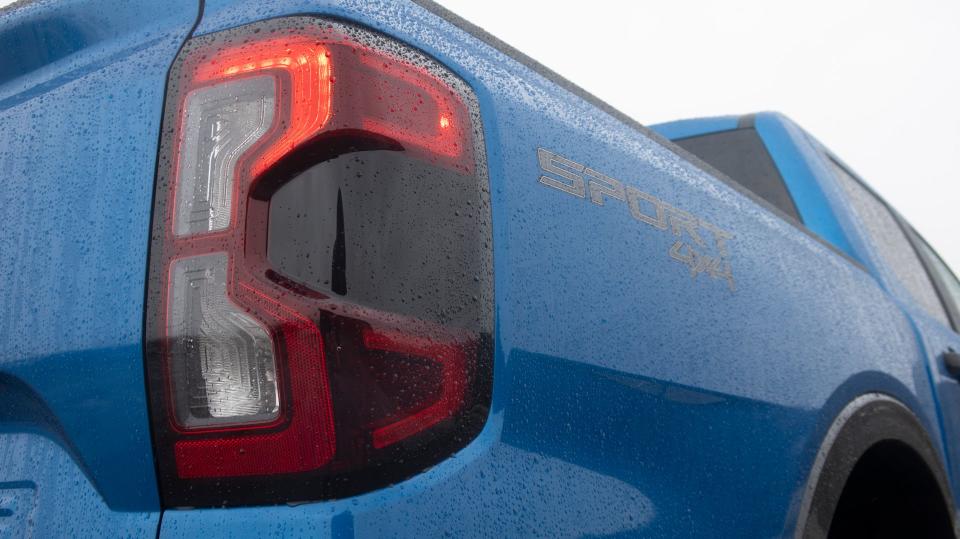



As for the Lariat and XLT trims that most people will end up buying, what is new with Ranger is the availability of the 2.7-liter twin-turbo V6 engine that’s been previously deployed in the Bronco and F-150. That claims an impressive 315 horsepower and 400 lb-ft of torque, which won’t fade much at elevation thanks to it being turbo-boosted. It’s scheduled to come out in the summer of 2024, at which point we’ll see exactly how much of a price premium you’re in for to get it. In the Bronco, it costs $1,895 to move up from the 2.3-liter to the 2.7 so I’d expect a similar figure with Ranger.
For now, all non-Raptor Rangers will ship with the 2.3-liter four-cylinder, which I drove paired with four-wheel drive at over 4,000 feet above sea level. Ford says it’s still good for 270 hp and 310 lb-ft of torque as it's been since '19. Again, it’s turbocharged, so it should hang on to most of that muscle far above sea level, though neither EcoBoost engine will require high-octane gasoline, which is nice.
I did some mountain road and highway test loops with two versions of the Ranger: A well-equipped XLT 4x4 optioned to about $45,000, and a Lariat 4x4 that would ring up at around $50,000 with a light camper trailer hanging off the hitch. All 2024 Rangers will run Ford’s 10-speed automatic transmission.
The 2.3 felt just OK on power. I was impressed with the transmission’s deftness at keeping the vehicle in the right gear to scoot when I asked it to and drop the revs when it could, though. Up and down some super-high Utah passes with no cargo at all, I had the power I needed but not much in reserve—I guess that’s why the bigger engine’s on the menu now.




I’m somewhat skeptical of this thing’s performance with four full seats and a heap of stuff in the cargo bed, but the engine didn’t seem to be near self-immolation with a couple thousand pounds of trailer behind it.
Braking felt great; the empty XLT panic-stopped quite swiftly and I felt like I was in total control of the trailer, too. My last piece of performance praise is a big one: The empty-bed ride quality is very nice for a pickup. Trucks can often seem a little nervous or bouncy with empty beds, but I didn’t feel that problem much here.
Steering was kind of odd, though. Moving the XLT through dry parking lot pavement had me feeling like I was pushing a knife through coarse sand. It’s not that it was unresponsive—it just felt kind of sticky and strangely heavy. The sensation lessened the faster I drove.






But my real complaints come from looking and feeling around the cab—and my list of let-downs in the interior is long. The seats are just OK; the cloth material on the XLT reminded me of the seat covers I got for $25 on eBay for my Scout—it’s super thin, and so is the cushioning under your butt. Not school bus bad, but you’re never going to forget you’re in a work truck. The Lariat’s leather is considerably nicer and pretty much worth moving up a trim on its own if you’re dead set on buying one of these.
The rear seats aren’t really any less comfortable than the fronts, which I suppose is a plus if you’re hauling people a lot. They fold both up and down to create a slightly flatter loading surface for inside cargo, which is cool.
Both trims I drove suffered from egregiously weak panel fitment. I know some drivers wouldn’t notice, but for me, even the jumbotron infotainment screen (we’ll get to that in a second) was not bright enough to distract me from the abundant evidence of cost-cutting my eyes kept landing on.








Yeah, the demonstrator test trucks we drove were pre-production units… but that’s what I got sent to evaluate so that’s what I’m gonna comment on. In both the XLT and Lariat, almost every place where two planes of plastic met was rough. The buttons themselves felt less decisive than the ones on my five-year-old Samsung TV remote, and the “PRNDL” marking on the XLT’s center console looked like it’d been coughed onto the plastic with chalk.


General ergonomics is another area I wasn’t particularly happy with. There are two up/down toggle knobs on the steering wheel, and pushing them up feels fine but down requires an awkward hand-repositioning—a major whiff for steering wheel controls, which I use constantly in any car.

With that, it’s finally time to talk about the screen. XLT and low-spec trucks get a smaller and less comprehensive digital gauge cluster display, but both vehicles I drove had major portrait-oriented displays in the center.
As for the gauge cluster, I think animated ones almost universally look cheap and inelegant compared to analog needles. You can technically fit more info on a digital dash, but almost no automakers do, and you’re left looking at a lot of pointlessly illuminated pixels. The 2024 XLT Ranger is retro enough to hang onto a physical key, and I wish they’d kept the cluster from the old truck, too.


Moving to the middle, I like the idea of a tall (versus wide) infotainment display. But in making this one equally viewable by driver and passenger, it’s not quite optimized for either. The angle my eyes laid on the main screen was, just, not quite right. Referencing the map or anything else costs a lot of time looking away from the road and some strain.
The primary climate controls are thankfully still hard keys, but heat for the seats and steering wheel is a pull-up menu that is not that easy to hit while you’re driving.
The stereos, even the uprated B&O-branded Lariat one, performed pretty poorly for me and yes, I did check to make sure the equalizer was set neutrally. Cranking “Represent” from the 2 Fast 2 Furious soundtrack, it sounded like Trick Daddy was singing into a Home Depot bucket.
A power-opening rear glass window is on the options list, and kind of neat, but it doesn’t look like you can spec a sunroof.
The Ranger’s most powerful and interesting piece of onboard tech is the camera array and trailer backup assist system. This truck is small enough to not really need a front camera, but it does help in tight situations. And being able to check on your trailer with a rear camera at speed is awesome.

Pro Trailer Backup Assist, which we’ve seen on the F-150 and Super Duty, is a new option for Ranger. This is the system in which the little drive-mode wheel effectively becomes a steering wheel at low speed in reverse. Used in conjunction with the cameras, this lets you “steer” the trailer while you’re backing up through the camera’s eye in the same way that you steer normally when you’re going forward.
Backing up a trailer requires a bit of spatial awareness. The idea behind the Pro Trailer Backup Assist is to relieve some of this by making trailer-backing more intuitive to someone who’s never done it before.
For those who have, like myself, there’s a bit of a learning curve. There was a Tacoma on hand (without such a system) and Ford let us do a little trailer-reverse maneuver with both its Backup Assist and the analog Toyota. I have to say, I was able to work much more efficiently backing up the trailer the old-fashioned way, with mirrors and knowledge of geometry. I appreciated the Ford system more when I tested it with the bigger F-150 and much bigger F-350, but the Ranger is maneuverable enough without it.


The accessibility innovations on Ranger that I liked the most were much more minor: There’s an optional deep step in the side of the rear bumper now that’s great for accessing the bed from the side, and the rear cargo LED lighting is super cleanly integrated into the bedsides.
After a short day of testing the 2024 Ford Ranger, I’m not sold. It’s got the highest capability claims in the segment, but do you really need to pull 7,000 pounds? Most wake boats and fiberglass fishing boats on a trailer are only about 5,000 pounds (JD Power has some good context on this). ATVs and watercraft (Jet Skis) will weigh less, which almost any mid-sized truck can do. The Ranger’s top 1,800-plus pound payload capacity is amazing, but why would you get a five-foot bed if you’re planning to do serious hauling?
The fact that this is only being sold as a short-bed long-cab truck suggests that people are buying these as daily drivers with the occasional call for work or off-road duty. If that describes you, I would strongly suggest taking a good hard look at your actual vehicle usage before pulling the trigger. Going into $50,000 of debt for one of these is mind-boggling to me when you could grab a moderately used F-150 for the same and have even more capability with a lot more interior comfort. Or just buy a spectacular car at that price point with superior driving dynamics.

One other factor loomed in the back of my mind while I was driving the new Ranger—Ford’s issued more recalls than any other U.S.-market automaker in the last three years. I asked their main comms guy Mike Levine about this, in the form of, “What’s Ford doing to reverse that trend?” and he sent me the following statement:
“We’re constantly working to improve vehicle quality and deliver the best experience for our customers. Voluntary recalls are one of the ways we proactively protect customers from experiencing an issue. Our initial quality is improving and customers with our latest vehicles are benefiting from it. Compared with 2022, about 30% fewer Ford customers were affected by safety-related recalls in 2023.
“One of the early indicators of customer loyalty is what our warranty looks like at three months in service. We still have work to do but are encouraged by the initial quality results we are seeing in our newest vehicles. Some of the most meaningful actions we are taking include additional testing, complexity reduction, and rigorous process discipline.”
Here’s hoping those efforts pay off on future Ford reliability. But recalls aside, after my test drive and my experience with other Rangers, I would rather have a last-gen Ranger than this one. And if we’re talking mid-sized, my favorite is still the much cheaper Nissan Frontier. It might get winded more easily at altitude without a turbo, but I found the ergonomic and driving experience more pleasant in that one—and you can still order it with a long bed if you need a real mid-sized work rig.

You could buy a new $50,000 Ranger and have one vehicle to haul your family around on Saturday and your home-supply store haul on Sunday, but you’d be far better off with a used $25,000 work truck and a $25,000 town car. This is just not a particularly pleasant vehicle to drive—which severely undermines the appeal of a mid-sized, family-friendly 4x4. From where I’m sitting, the new Ranger has the roughness of a Wrangler or 4Runner without the charm—I think that's simply because, while its chassis is refined, its interior is not.
The Ranger Raptor, on the other hand, is a completely different animal and a much different value proposition. I had a very different takeaway there but you’ll have to wait for a separate review on that one.
2024 Ford Ranger XLT 4x4 Specs | |
|---|---|

 Yahoo Autos
Yahoo Autos 